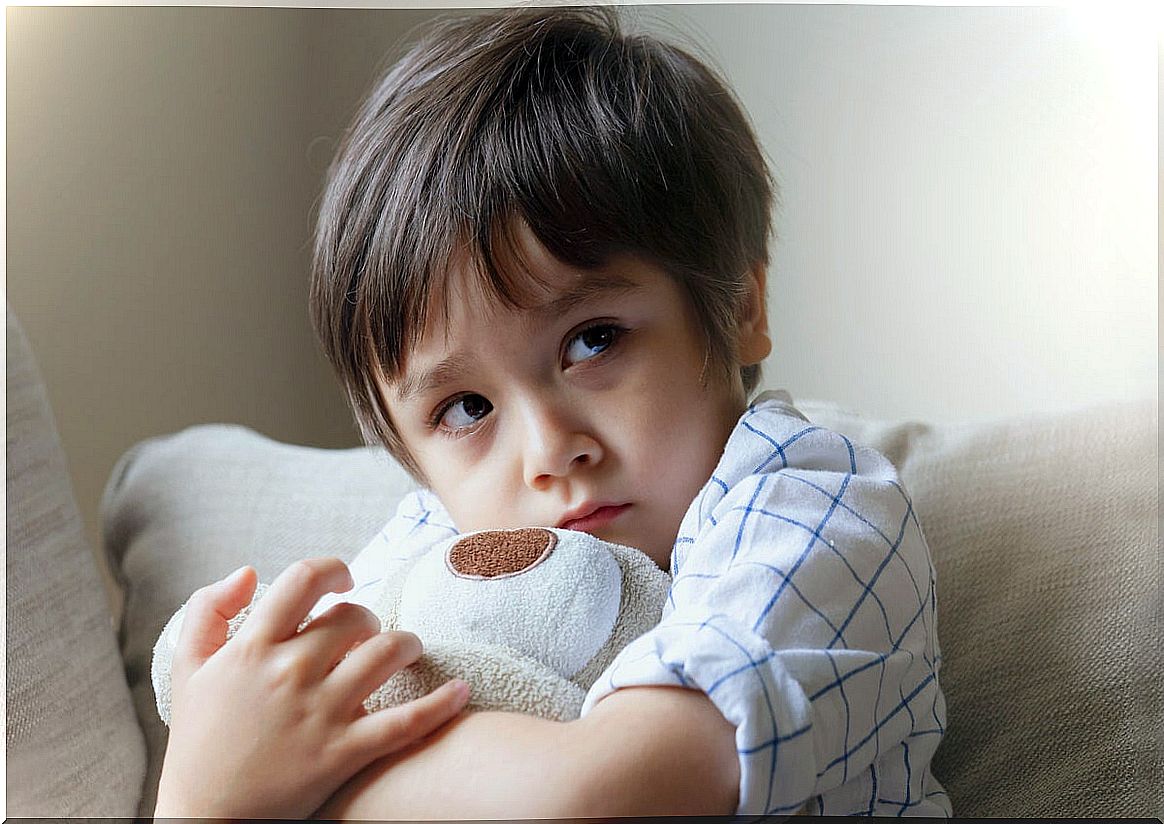Sensory Processing Disorder: What Is It?

Sensory Processing Disorder appears frequently in children diagnosed with autism spectrum or attention deficit with or without hyperactivity. It is characterized by a clear difficulty in regulating everything that comes to them from the world of the senses. Every smell, sound, or sensation is processed in an intense, messy, and even painful way.
Imagine for a moment what it must be like to live inside a body and a mind, which is stressed by any kind of noise. They are people who experience high nervousness, a sense of threat and embarrassment when they are in a scene with many people. Clothes hurt just by touching the skin and it is difficult to even hold a pencil in your hand.
The world, as we can imagine, can be terribly complex for those who cannot integrate every stimulus, every sensation in their brain. Thus, in recent years this condition has attracted increasing interest because many experts consider that it is essential to differentiate it from other conditions.
On the other hand, there is something evident: we are facing a clinical reality with a great functional impact on the life of those who suffer it.

Symptoms of sensory processing disorder
Many people can feel overwhelmed and even blocked when going to a mall. Lights, crowds, sounds, and even smells are stressful and very overwhelming. There are those, for example, who even have great problems when choosing a certain type of clothing. The reason? There are tissues that itch and cause great itching.
It is not surprising if we point out that there may be a small sector of the population with undiagnosed sensory integration dysfunction. This condition of neurological origin occurs when it is not possible to adequately integrate all sensory stimuli that come from the environment.
Let’s know what the symptoms are:
Symptoms of hyperresponsiveness
Hyperresponsiveness is related to discomfort, stress, and even pain when touching, smelling, or looking at certain stimuli. They are very disconcerting situations for those who suffer it because they are, above all, before the incomprehension of the environment.
- They are people who avoid crowds or groups where there are more than three or four people.
- They often feel dizzy.
- They shy away from physical contact because it bothers them.
- Certain sounds or lights cause tachycardia and high distress.
- There are multiple foods that make them feel bad.
Symptoms of hyporesponsiveness
Sensory processing disorder also has a clear difficulty in reacting to certain situations:
- They have a hard time waking up in the morning.
- Show a marked slow to respond to any stimulus: words, hazards, etc. This often makes it possible to suspect that the person may suffer from hearing deficits; which in the end does not turn out to be the case.
- Children, for example, take a long time to hold their toilet bowls or hold their urine to go to the bathroom.
Motor problems
This sensory syndrome has obvious limitations in the motor aspect. In childhood, it is very complex to achieve adequate fine motor skills. They are also children with coordination problems, with high motor slowness and with serious limitations when it comes to being autonomous.
Other symptoms of sensory processing disorder
- Great impulsiveness and restlessness.
- Tendency to suck on objects.
- Tendency to seek danger, in fact it is common in childhood to suffer multiple accidents at home.
What is the cause of this disorder?
Studies such as those carried out at the Ciudad Real Child Development Center (CDICR), Spain, indicate that we are facing a condition still of uncertain origin. This fact causes great frustration, both for parents and the experts themselves. It is known that the incidence in the child population is between 5% and 8%.
On the other hand, research works such as those carried out at the University of Colorado, point to a hypothesis that a large part of the scientific community maintains: the origin could be genetic and neurological. In fact , alterations have been seen in the cerebral striatum, the white matter, and the auditory cortex.

Differences between autism and brain processing disorder
More than 90% of children with autism spectrum disorders (ASD) show sensory disturbances. Many of them suffer from both hyperresponsiveness and hyporesponsiveness, basic signs to proceed to a proper diagnosis according to DSM-5. However, some of these children present symptoms of sensory disturbances, but not the rest of the characteristics that define autism.
It is then that many of these little ones are left in limbo and what is worse, they suffer inattention. This occurs because sensory processing disorder is not as well known and is often overlooked. It is therefore decisive to discriminate the diagnostic bases and the characteristics that differentiate them from ASD or hyperactivity.
Let’s see, based on a 2014 University of California study published in the journal PLOS ONE:
- Children with sensory processing disorders do not show problems in primary language or deficiencies in social interaction.
- The little ones with sensory problems, show in all cases, notable problems at the motor level. Many of them are unable to write, cycle, go to the bathroom alone, or get dressed.
- They are very prone to losing their balance, getting dizzy and having accidents.
- The child with this disorder is very disorganized.
- Likewise, it is difficult for them to carry out any activity because suddenly, multiple stimuli are integrated (visual, auditory, physical …) that they cannot understand or integrate.
To conclude, we need first of all to make this disorder known and also develop adequate therapeutic strategies to promote the correct development and integration of the person with sensory integration difficulties. We are facing a neurological disorder that demands greater scientific support.









